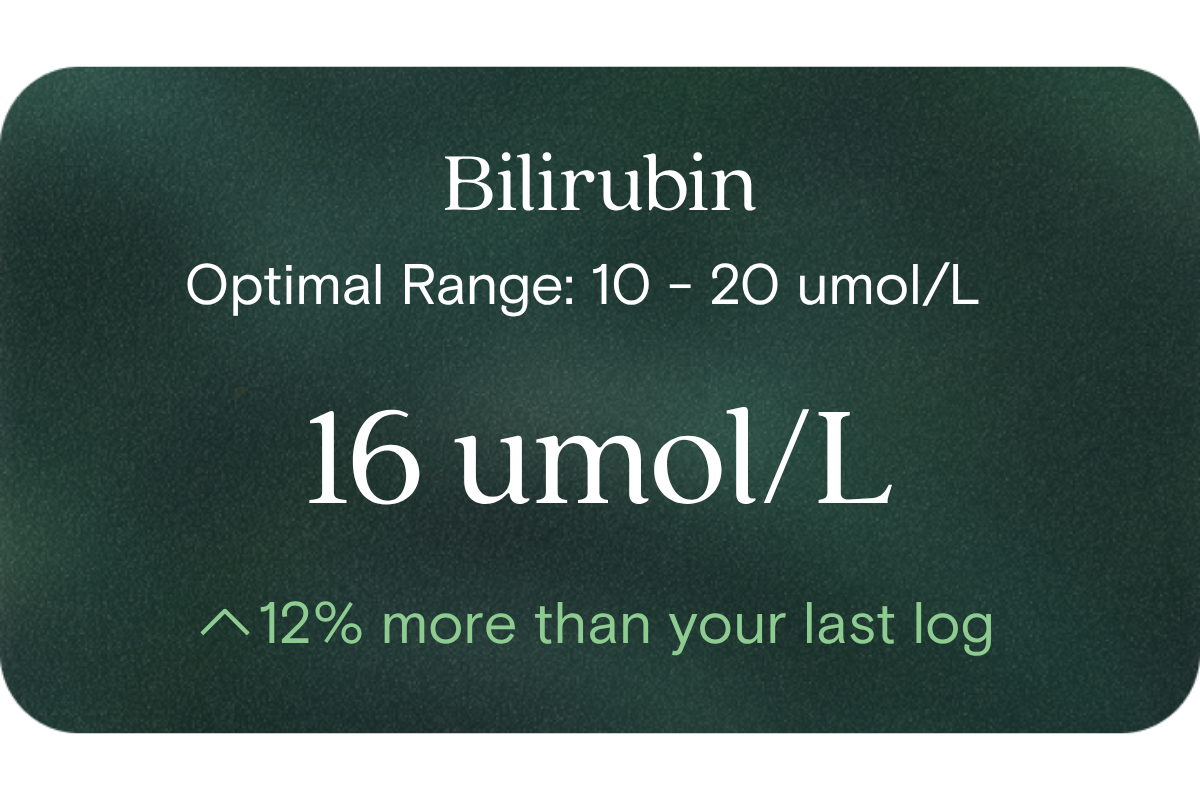What is bilirubin?
Bilirubin is a yellow pigment produced when red blood cells break down naturally. It’s processed by the liver and excreted through bile into the intestines.
Why does it matter for long-term health and wellbeing?
Bilirubin plays a key role in detoxification and functions as a natural antioxidant. Maintaining optimal levels supports metabolic health, energy balance, and long-term cellular protection.
What’s an optimal level of bilirubin?
- Typical lab reference range: 1–20 µmol/L
- Optimal range for wellbeing: 10–20 µmol/L
What influences bilirubin levels?
Levels can be affected by hydration, diet, alcohol intake, physical activity, and how efficiently your body breaks down and processes red blood cells. Genetics and overall liver function also play a role.
What does it mean if bilirubin is outside the optimal range?
Lower levels may reflect reduced antioxidant support, while higher levels can indicate that waste clearance is less efficient. If results consistently fall outside the typical range, further testing may help identify underlying lifestyle or metabolic factors.
How can I support healthy bilirubin levels?
Focus on a balanced diet rich in antioxidants, stay hydrated, maintain regular physical activity, and support your body’s natural detoxification through quality sleep and reduced alcohol intake.
This information is provided for general health and wellness purposes only and does not replace medical advice.
References
- Vítek, L., & Tiribelli, C. (2023). The physiology of bilirubin: health and disease equilibrium. Frontiers in Pharmacology, 14.
- Jiang, J., Zhou, J., & Yang, Y. (2021). The Nonlinear Relationship Between Total Bilirubin and Coronary Heart Disease: A Dose-Response Meta-analysis. Frontiers in Cardiovascular Medicine, 8:761520.
- Stocker, R., Yamamoto, Y., McDonagh, A. F., Glazer, A. N., & Ames, B. N. (1987). Bilirubin is an antioxidant of possible physiological importance. Science, 235(4792), 1043–1046.




















.png)
